Over the past few years, I’ve grown to really appreciate Liouguei District (六龜). It’s one of the most scenic and thinly populated parts of Kaohsiung.
The number of humans living here has steadily declined since the 1980s. With barely 12,500 adults and children spread over 194 square kilometers, Liouguei’s residents enjoy more space per person than folks in Hualien County.
Liouguei is dominated by the Laonong River (荖濃溪), a major tributary of the Kaoping River (高屏溪). Within the district, there are four river crossings. Three are part of the provincial highway network; the fourth belongs to Kaohsiung Local Road 131.
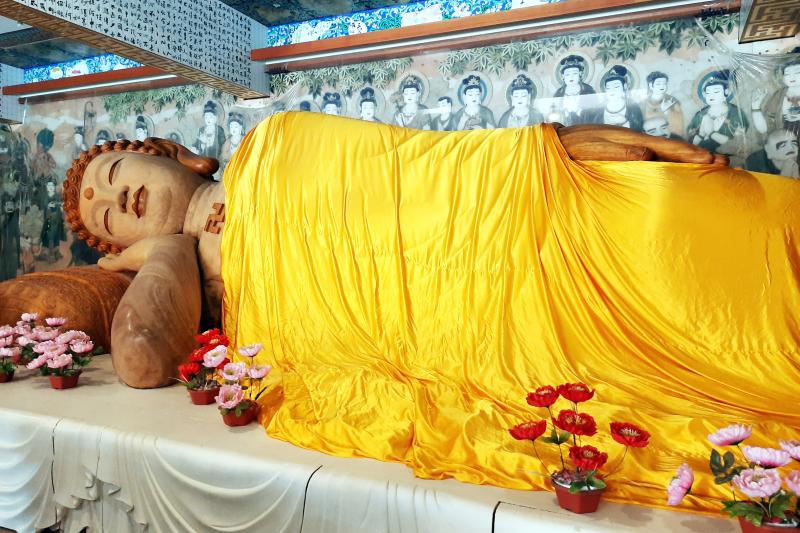
Photo: Steven Crook
Following up on a brief visit a few weeks earlier, I recently drove along Provincial Highway 20 into the northern part of the district, then turned south onto Provincial Highway 27. I found the turnoff and bridge for Local Road 131 about 6km from the intersection of highways 20 and 27.
On the western side of the Laonong River, the road worked its way through a small village before entering a tract of beautiful back country. This, I’d learned from a road sign on my previous visit, is the Colorful Butterfly Valley Scenic Area (彩蝶谷風景特定區).
The scenic area comprises 485 hilly hectares of brushy woodland dotted with stands of teak and kassod. It’s not a single valley, but rather eleven interconnected drainages. Several of the streams dry up during the cool season, but there’s usually water in the Hongshuei Creek (紅水溪) and the Jhujiao Creek (竹腳溪).
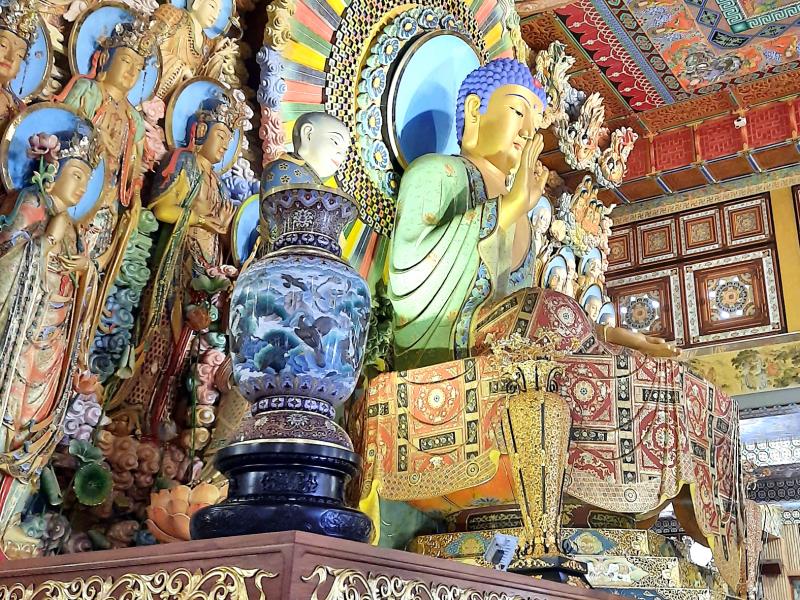
Photo: Steven Crook
More than 250 butterfly species have been recorded here, and it’s said that pretty much anytime between March and October you can expect to see a good number and variety of lepidopterans. From what I saw, I wouldn’t consider it much of a butterfly hotspot, certainly when compared to the Purple Butterfly Valley (紫蝶幽谷) in Maolin (茂林), 16km to the south. But it’s a delightful and highly accessible patch of nature.
Following Local Road 131 brought me to the back of a major temple I’d seen in the distance on my previous visit. I entered the grounds of Di Yuan Temple (諦願寺, literally “temple of hope”; open 4am to 8.30pm daily) without any expectations. Yet its location, overlooking and within a javelin throw of the Laonong River, is both commanding and vexing.
Having experienced a few of the typhoons and earthquakes that have ravaged Taiwan, I looked at this modern Buddhist complex and asked myself: Despite the concrete that’s been poured over the riverbank — and the prayers for protection that have surely been offered — how would it fare in a natural disaster?
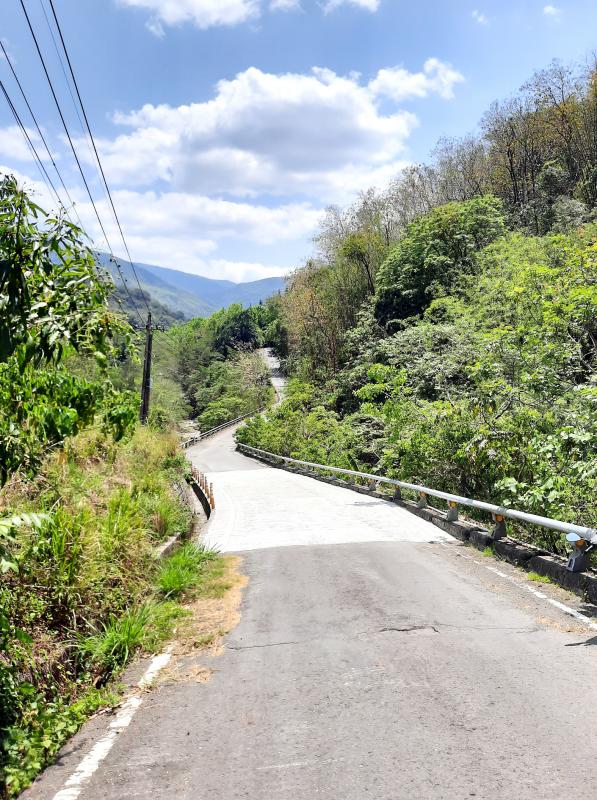
Photo: Steven Crook
That question has already been answered, I learned after I got home. The groundbreaking ceremony was held back in 1996, but the first of three phases of construction wasn’t completed until 2016. A lack of funding was one reason for the slow progress. Another was that major repairs were needed in 2009, following Typhoon Morakot.
Walking from the parking lot and into the courtyard behind the main shrine, I encountered something I’ve never before come across in a place of worship: A pair of large and aggressive dogs.
The moment they saw me, these canines decided they didn’t like me one bit. I spent the rest of my visit looking around corners before making any moves.

Photo: Steven Crook
Externally, Di Yuan Temple isn’t very different to many other religious sites in Taiwan. Internally, however, there are several interesting features.
The main hall is gloriously colorful, and the Shakyamuni Buddha has a head of vividly blue curls. Hair of this hue is one of the Buddha’s 32 distinguishing physical characteristics. Next to the altar, there’s a concert piano. I don’t think I’ve ever witnessed a Buddhist service that included piano music.
On the far left of the hall, I found a Fasting Siddhartha statuette, and learned from it that in Chinese this kind of icon is called “Six Years of Austerity” (六年苦行). During the spiritual quest, preceding his enlightenment, the Buddha devoted six years to intense mental concentration and cutting all attachment to physical senses. It’s said that, toward the end of this period, he survived on a single grain of rice per day, and became skeletal thin.

Photo: Steven Crook
Behind the blue-haired Shakyamuni Buddha, 33 representations of Guanyin (觀音) face the back door. In Buddhism in Taiwan and China, this bodhisattva of mercy and compassion is female; elsewhere, he/she is usually regarded as male.
The central image is about the size of an adult and shows Guanyin sitting on a huge fish. This alludes to a story in which she appears in a market as a beautiful young woman holding a basket of fish, and requests that the men who admire her prove their worth by memorizing Buddhist sutras. It’s a very fine and intricate piece of work — but I was distracted by the bodhisattva’s enormous clodhopping feet, the significance of which I’ve not been able to discover.
Another highlight within the complex is a striking Reclining Buddha. Weighing seven tonnes, 7.5m in length, and carved from a single camphor tree, it’s claimed to be the largest camphor-wood Buddha in East Asia. An adjacent chamber held a somewhat smaller Buddha, also reclining and still wrapped in plastic.
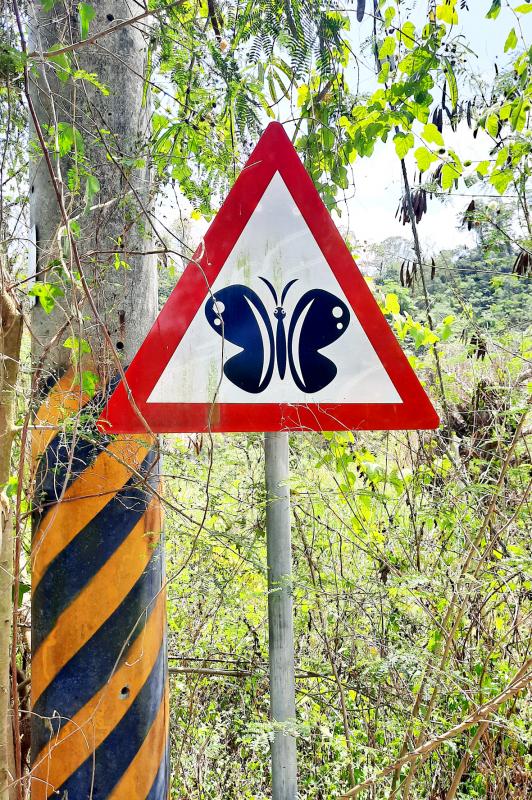
Photo: Steven Crook
A patch of land near the parking lot is populated by gray statues of arhats, individuals who have made great progress toward enlightenment, but have not attained a state of Buddhahood.
One online source puts the number of arhat statues beside Di Yuan Temple at “more than 500,” and points out that no two are the same. Each statue bears a number, but I didn’t see a master list anywhere. Serious Buddhists may look askance at my choosing a favorite arhat. But who can resist the charm of the bald-headed gentleman who, while in deep contemplation, strokes his waist-length eyebrows?
Steven Crook has been writing about travel, culture and business in Taiwan since 1996. He is the author of Taiwan: The Bradt Travel Guide and co-author of A Culinary History of Taipei: Beyond Pork and Ponlai.
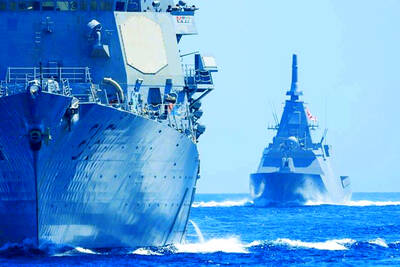
It’s always a pleasure to see something one has long advocated slowly become reality. The late August visit of a delegation to the Philippines led by Deputy Minister of Agriculture Huang Chao-ching (黃昭欽), Chair of Chinese International Economic Cooperation Association Joseph Lyu (呂桔誠) and US-Taiwan Business Council vice president, Lotta Danielsson, was yet another example of how the two nations are drawing closer together. The security threat from the People’s Republic of China (PRC), along with their complementary economies, is finally fostering growth in ties. Interestingly, officials from both sides often refer to a shared Austronesian heritage when arguing for

The ultimate goal of the Chinese Communist Party (CCP) is the total and overwhelming domination of everything within the sphere of what it considers China and deems as theirs. All decision-making by the CCP must be understood through that lens. Any decision made is to entrench — or ideally expand that power. They are fiercely hostile to anything that weakens or compromises their control of “China.” By design, they will stop at nothing to ensure that there is no distinction between the CCP and the Chinese nation, people, culture, civilization, religion, economy, property, military or government — they are all subsidiary

Nov.10 to Nov.16 As he moved a large stone that had fallen from a truck near his field, 65-year-old Lin Yuan (林淵) felt a sudden urge. He fetched his tools and began to carve. The recently retired farmer had been feeling restless after a lifetime of hard labor in Yuchi Township (魚池), Nantou County. His first piece, Stone Fairy Maiden (石仙姑), completed in 1977, was reportedly a representation of his late wife. This version of how Lin began his late-life art career is recorded in Nantou County historian Teng Hsiang-yang’s (鄧相揚) 2009 biography of him. His expressive work eventually caught the attention

Late last month the Executive Yuan approved a proposal from the Ministry of Labor to allow the hospitality industry to recruit mid-level migrant workers. The industry, surveys said, was short 6,600 laborers. In reality, it is already heavily using illegal foreign workers — foreign wives of foreign residents who cannot work, runaways and illegally moonlighting factory workers. The proposal thus merely legalizes what already exists. The government could generate a similar legal labor supply simply by legalizing moonlighting and permitting spouses of legal residents to work legally on their current visa. But after 30 years of advocating for that reform,